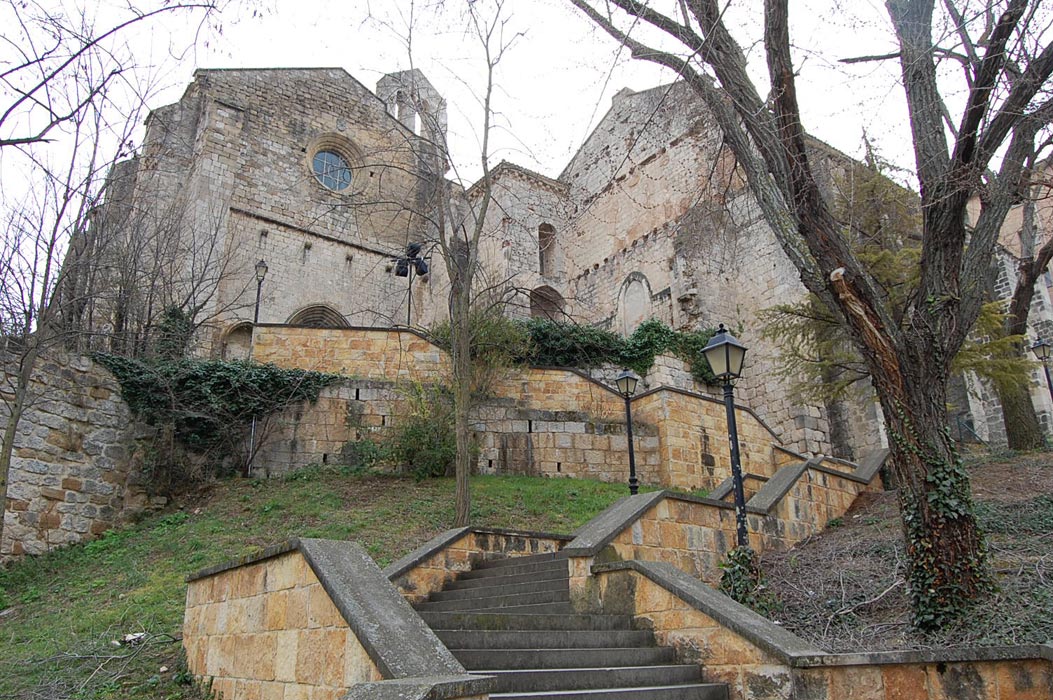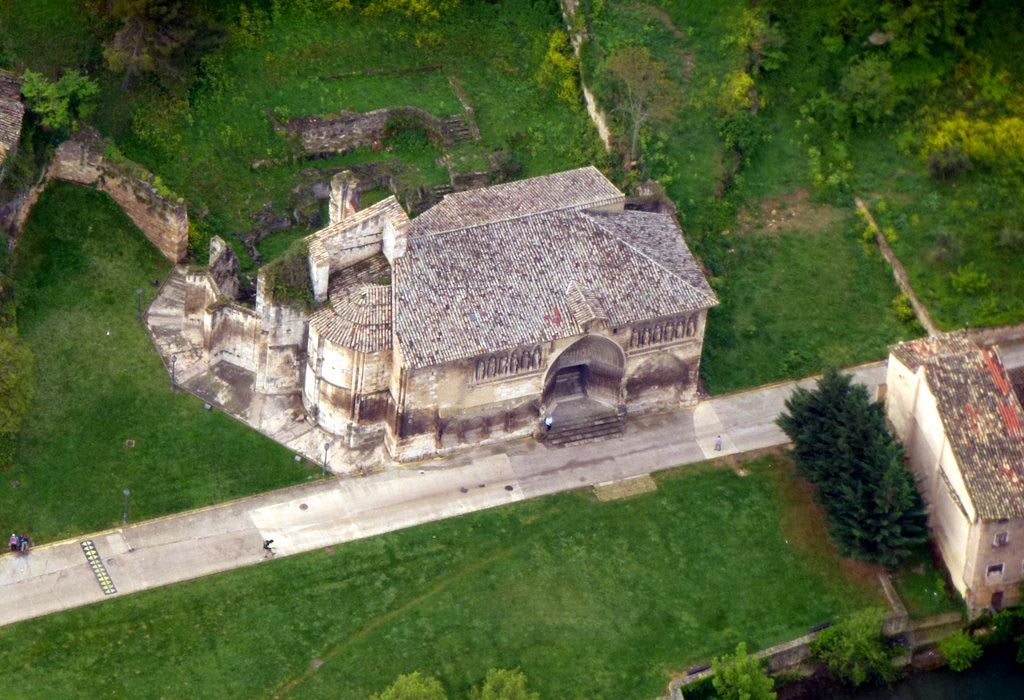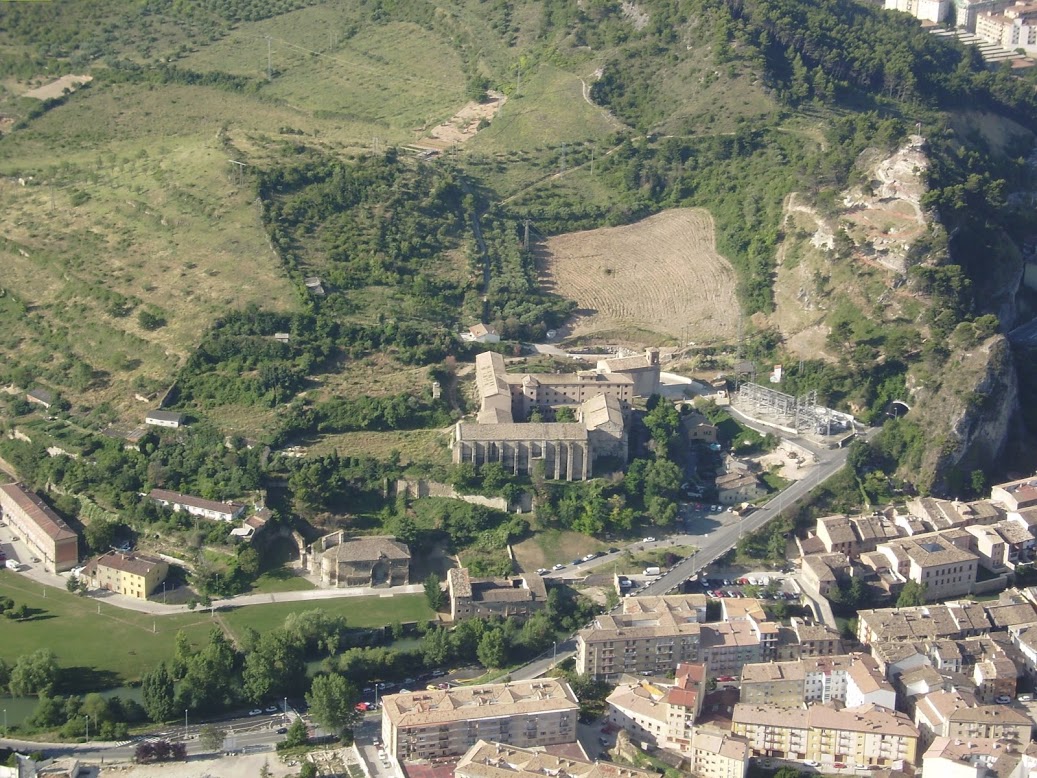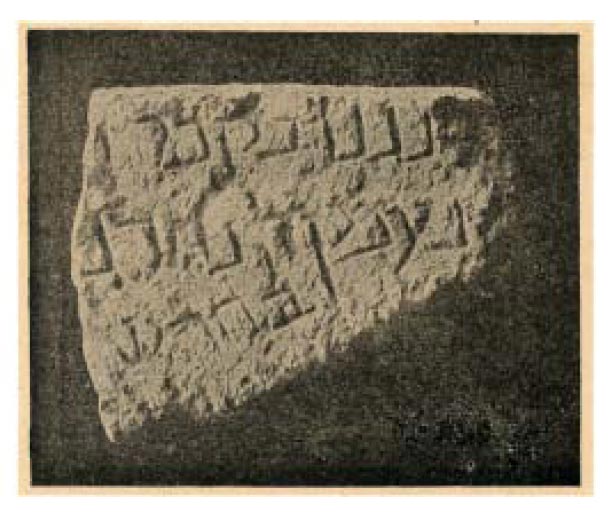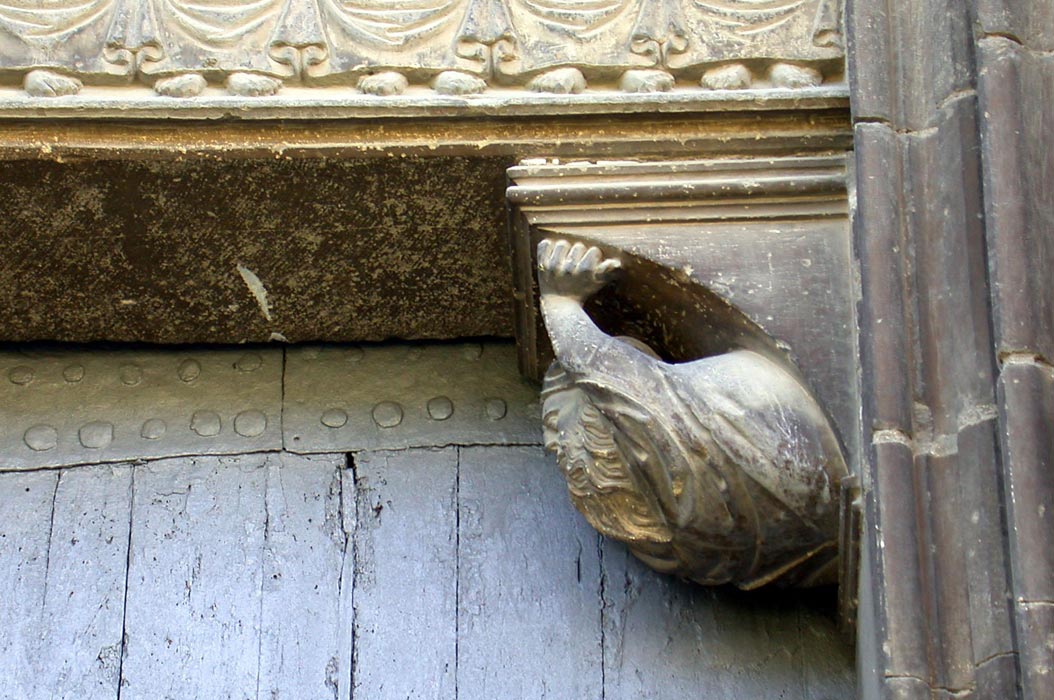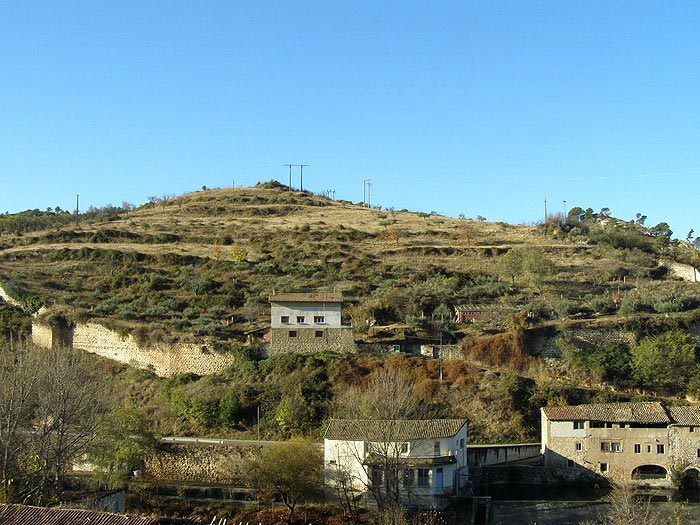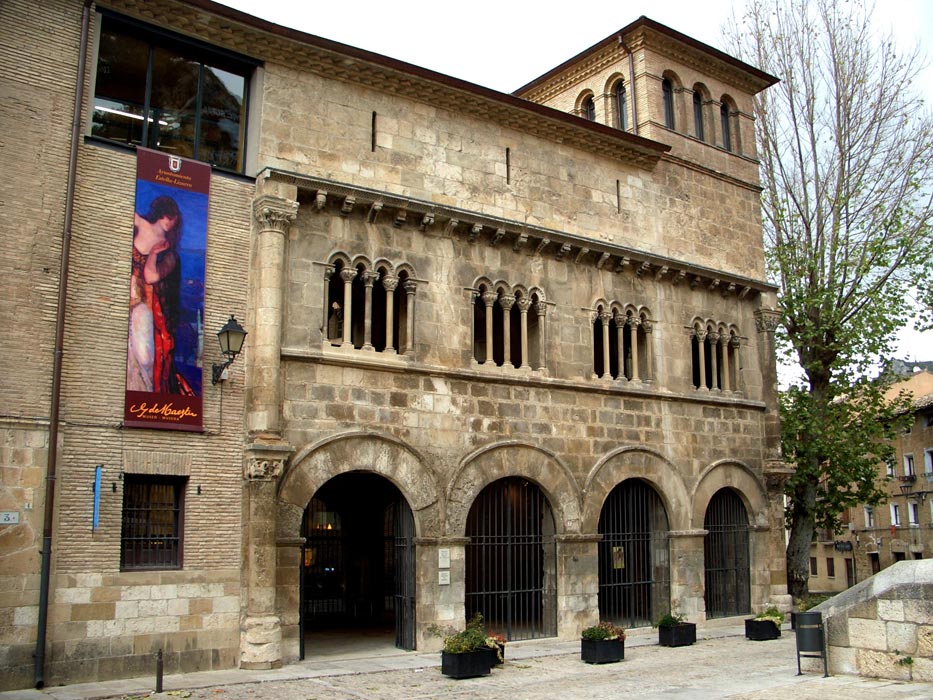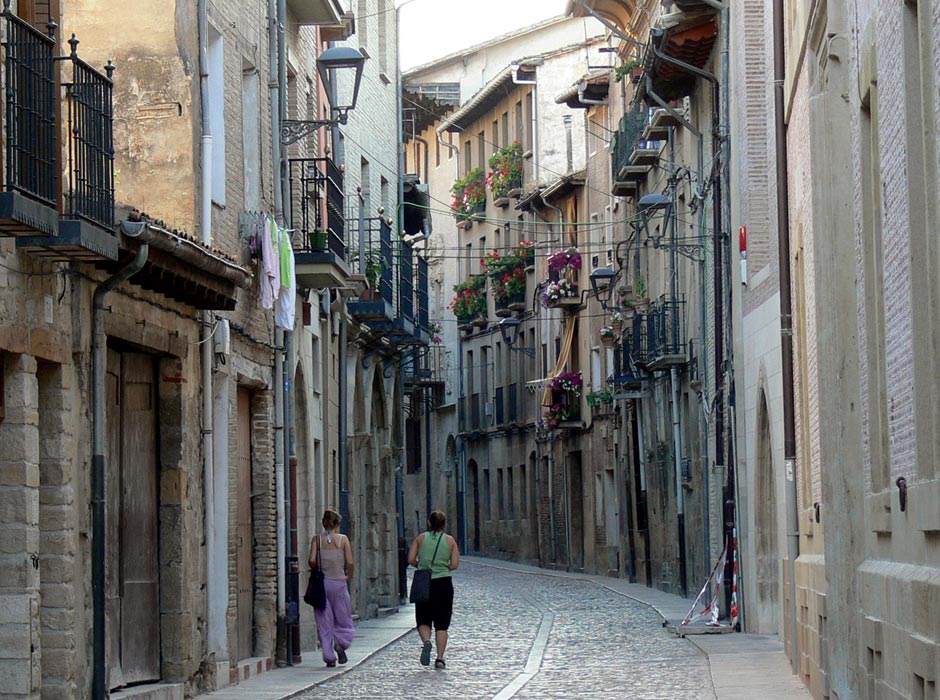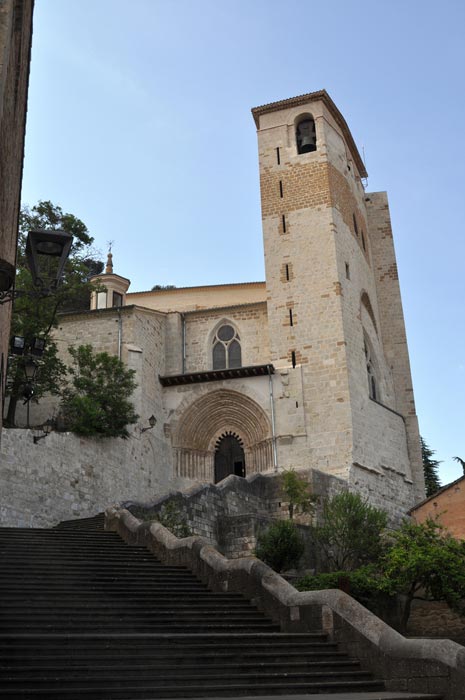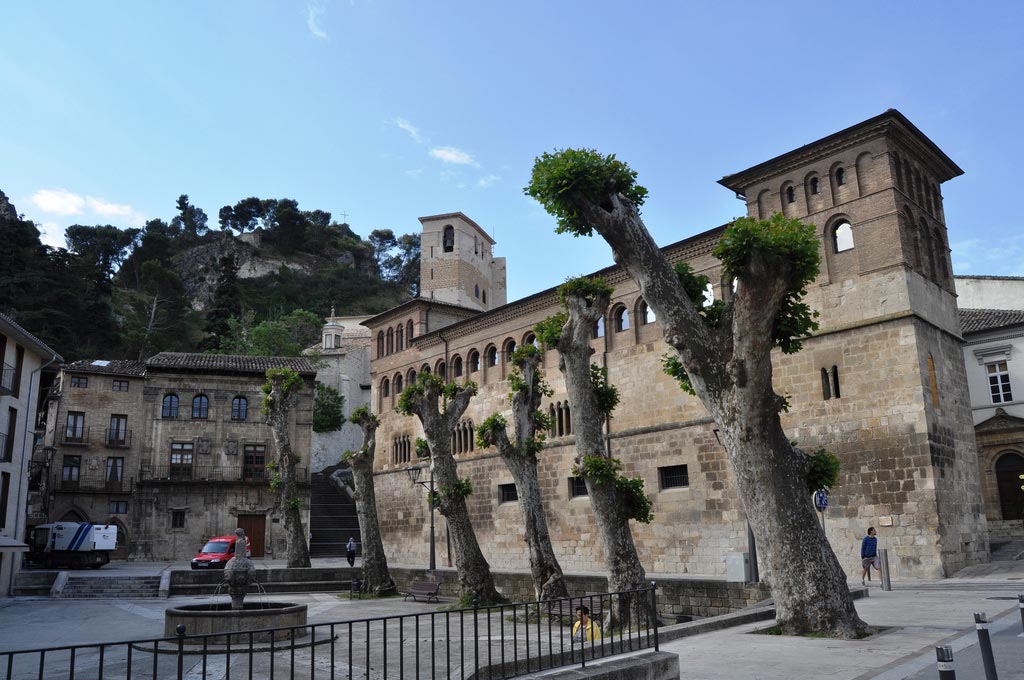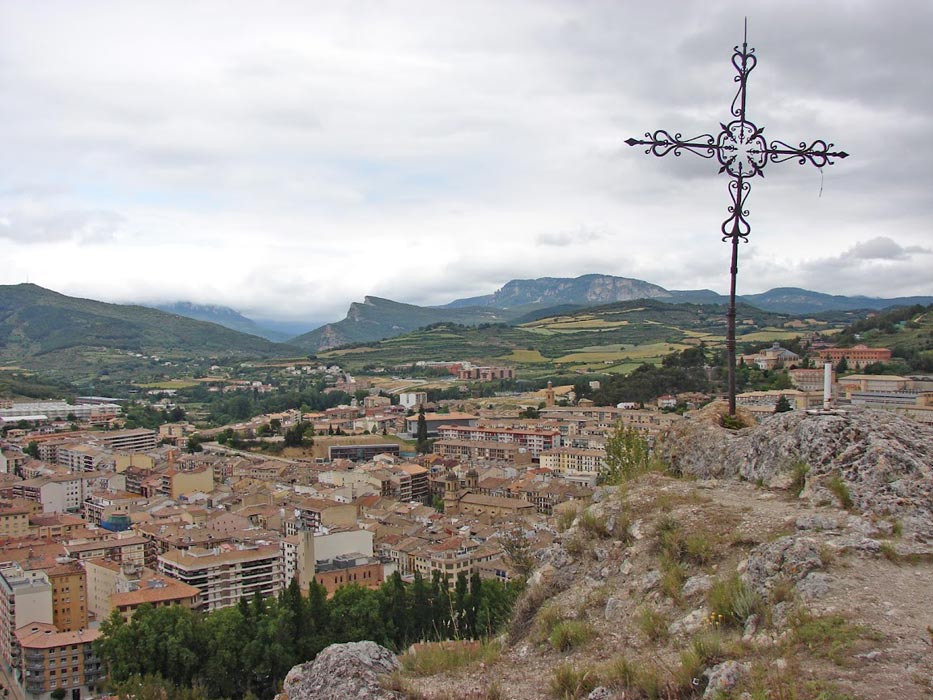Under the protection of the castles of Zalatambor and Belmecher, forgotten for centuries
as an archaeological treasure yet to be discovered, the Estella Jewish quarter played a major role in the great period of commercial and cultural splendour which
the city experienced from its foundation in the 11th century until the late 13th century.
In addition to passing through the historic, populous Rúa de las Tiendas, right in
the heart of St. James' Way, a promenade upwards through the historical places where
the old Jewish quarter of Elgacena was located, today affords the chance to discover
the city from its very roots as the frontier stronghold in an environment packed with
beauty defined by the curves of River Ega and the heights of Montejurra, Peñaguda,
Santa Bárbara, Belástegui and Cruz de los Castillos.
What became the third most important aljama in Navarre after Pamplona and Tudela stood out for its commercial splendour and brought
to the kingdom illustrious men and people who enjoyed the trust of the monarchs, which
did not prevent it from experiencing painful episodes too which cast a cloud over
the peaceful cohabitation of Christians and Jews. In Estella, a strategic point between
the mountain and stream of Navarre, the memory of its Jewish settlers remains as a
magnificent complement to the mark left by its medieval palaces and churches.
Located on the former Basque settlement de Lizarrara, and after the conquest in 907-908
of the Moslem fortress of Monjardín by Sancho Garcés I, facilitating the creation
of Christian population nuclei in the area, the city of Estella was founded by the
King of Navarre Sancho Ramírez in 1090 with a view to protecting pilgrims on St. James'
Way and establishing a secure frontier here in view of the Moslem threat. Initially
solely inhabited by franks with the exclusion of nobles, clerics and peasants from
Navarre, Estella was developed alongside the narrow corridor which the River Ega leaves
between its waters and mountain. San Nicolás street on the way to Logroño when it
goes through the settlement constitutes, along with Rúa, the main thoroughfare of
medieval Estella which would later become a strategic population for the interests
of the kingdom of Navarre.
Since the last third of the 11th century there is evidence of Jewish settlers in the
area of Estella under royal protection. Very early on, in the late 11th century, it
is likely that the Jewish population grouped together in the Elgacena district, situated
between the nascent town of San Martín and the fortress or castle of Zalatambor. This
incipient community, the seed of the future Jewish quarter, was surrounded by the towers of the set of castles and the stretch of wall.
For decades the Jews lived in the Elgacena district, the first and oldest Jewish quarter in the kingdom of Navarre whose gestation and subsequent growth coincide with the
age of the dynastic union with Aragon (1076-1134). In the last few year of this dynasty,
already under the reign of Alfonso I the Battler, the development achieved by the
Jewish community made it advisable for it to shift eastwards, up the mountain, until
inserted between Elgacena street - at the back of the Santo Sepulcro (Holy Sepulchre)
church and the steep slope facing South.
The participation of the Jewish minority in the configuration of the Frankish boroughs
was decisive. In the middle of 1188, for instance, in a quarrel between the inhabitants
of Lizarra and those of Bearin, a witness appears - alongside the Provost, the mayor
of the town and ten good men and true - Rabbi Elías, a prominent member of the Jewish community. Shortly into the second half of
the 13th century, the number of residents in the Jewish quarter may have been around 150, equivalent to ten per cent of the residents of Estella.
The members of the Jewish community of Estella increased over time until reaching
their height in around 1290 with around 180 homes. Although no documentary references
have been kept, it is easy to imagine that for a population of this size there could
be more than one synagogue, but no trace has been kept thereof. In its expansion stage, the Jewish quarter reached
the bricked up limits of St. Dominic´s convent, erected by Teobaldo II in 1258 and
situated on the slope of Roca de los Castillos. Shortly afterwards on March 29th 1265,
this same King donated to two brothers, friars of the Grandmont order, a vineyard
alongside the castle and some outbuildings of Santa María church of the Jewish quarter
so that they could have their house or chapel there.
This power of the royalty always took care to grant its protection to these unique
vassals. Protection which was also exercised by the monarchs of House of Champagne
when they came to the throne of Navarre in 1234 after the death without leaving a
successor of Sancho VII the Strong, the last in the line of the Jimena dynasty. Despite
their origin –Count Palatines of Champagne and Brie– and their proximity to the court
of Paris - the new «king-counts» maintained a prudent policy aimed at containing the
growing Christian hostility against the Jews. As far as proved possible, they contributed
to the development of this flourishing community. In the middle of 1237, shortly after
taking the crown, Teobaldo I handed to Master Abraham Alfaquín the houses and press
which had belonged to Juce, the son of Ezquerra for an annual income of 50 sueldos sanchetes (currency) or any other currency in force in the kingdom.
These properties, located in the Jewish quarter area, adjoined those of Jussua Euenvilla, the brother of Salomón and that of Samuel
Calabaza; transfers (encumbered by an annual censos, for «judevencos» real estate and located on plots of the Jewish quarter) obey inheritance successions when the transmitting party (already dead) does not
have any legitimate heirs and, consequently, the sovereign is the beneficiary. This
is why, as will be seen later, the royal fisc received censos which it levied on some houses of the Jewish quarter. In any case, these illustrious names represent families residing in the Estella
Jewish quarter from the early days of settlement almost one and half centuries before.
At the start of the second third of the 13th century, the internal organisation of
the community was already up and running. This is the impression gained when analysing
the treasury book for 1266, the first complete one which has survived. In this year,
the Estella aljama contributed over 1,600 pounds, a by no means modest sum and which illustrates a community
which is wholly organised, active and prosperous, capable of granting the King loans
and making extraordinary contributions. This climate of understanding and collaboration
was endorsed in the succession crisis which followed the death 0f Enrique I of Navarre.
His daughter and heiress, Queen Juana –a girl of tender who was born on January 14th
1273 in Bar-sur Seine– was under the guardianship of the King of France, Philip III
the Bold. In view of this situation, the mayor and jurors of the aljama of Jews of
Estella, on behalf of the whole Community, swore on oath on the Torah and the Law of Moses to the Queen's representative that she (May 1276) was betroth
with the heir to the throne of France, the future Philip IV the Handsome. After the
attack on Navarrería de Pamplona between 1277 and 1289, the King of France sent the governor a series of orders pertaining to the safeguarding of the people and interests of
the Jewish communities of Estella and its Merindad.
Between the 13th and 14th centuries, families like the Levis, Ezquerra and Calahorra,
inter alia, made the Estella market into an active money lending centre. In the last
quarter of the 13th century though, royal proclamations like the extension for eight
years of the interest contracted with Jews by Christians or the penalisation of usury,
which, in some cases, actually trebled the debtors' interest, indicated a break with
the system maintained up to that point In actual fact, the great pressure exerted
on the Estella aljama by the Christians and their authorities forced the Jews to claim the royal protection
of Pamplona in the early 14th century, a century in which the Navarre monarchy would
reveal it was incapable of defending Jews' rights despite the fact that the latter
were regarded as the property of the king.
With the death of Charles I The Bald in 1328, Navarre experienced a power vacuum which
the masses took advantage of to attack the Jewish quarter of Estella and destroy the credit documents which committed many Christians to pay. Contrary
to that which happened elsewhere, the Jews, aided by Jews from outside the city who
happened to be there, decided to face up to their attackers which caused the latter to ring the bells of the city to call upon the help of peasants from the outskirts. In his book Zedah-laderek, the scholar and historian Menahem ben-Zéraj¸son of Rabbi Abraham and a survivor of the massacre, recounts how they cut the throat of his father,
mother and his four siblings.
After the attack of 1328, the Jewish quarter would never be the same again. Many houses in the Jewish quarter were sacked and
some of its settlers ended up dead. In 1329 Queen Juana II imposed a fine of 10,000
pounds on the city as punishment for the aforementioned events, decreeing the death
penalty for the main ringleaders and the imprisonment of other parties responsible
such as the friar Pedro de Ollogoyen, regarded as guilty of stoking up the masses
with his antisemitic sermons. Despite the goodwill of the royalty, these measures
were generally not implemented.
However, the effective governance of the first Evreux heals the wounds and ensured
a speedy recovery. The censos on houses were already being charged in 1333 and the pecha (tax) of one thousand one hundred pounds from before the attack was lowered to 300
and shortly afterwards in 1336 it was raised to 500. These and other updates were
the subject to negotiation with the treasurer and put into practice by the bailiff and his deputy and even the aljama, faced by the new situation, drew up new ordinances (taqqanot) which entailed hefty costs for the «Honourable member». Thirty years after the attack
in around 1360, the Jewish population of Estella regained its previous demographic
level. The new inhabitants of the Jewish quarter were Jews from Lower Navarre (France, England), because the inhabitants of Estella which had taken flight to the
westernmost Jewish quarters of the kingdom, despite being asked to do so by the crown,
were never to return.
During the course of the 14th century with Charles II the Bad and Charles III the Noble, the Jews were still closely bound to the crown through families like the Leví and
the Orabuena. León Orabuena, the doctor and chief rabbi of Estella, practised as a doctor of Charles III, a king as famous for his travels as for the pomposity of his court
in which the Jewish doctors and astrologists shone. The existence of illustrious Jews
like Sento Saprut, Abraham ben Isaac, David ben Samuel (author of Kiryat Sefer) or Judah ben Joseph ibn Bulat or the residence in Estella of the great writer from Tudela Abraham ibn Ezrá, make clear that the Jewish quarter in Estella - which numbered 85 families in 1366 - was star which slowly went out
during the course of the century, coinciding with the start of a general decadence
of the city which would not recover until the 18th century.
The expulsion of Spanish Jews as from the Decree by the Catholic Monarchs on March
31st 1492 had no impact in Navarre. In actual fact, it was here where many Castilian
Jews expelled as a result of said decree took refuge in line with the policy promoted
by the Monarchs of Navarre, Juan II of Albret and Catalina de Foix. Nevertheless,
in view of the constant pressure exerted by the Castilian monarchs, the Monarchs of
Navarre were forced to expel the Jews from Navarre in 1498. The majority of the latter
preferred to convert to Christianity and remain in their homes running their businesses
though some did go into exile.

